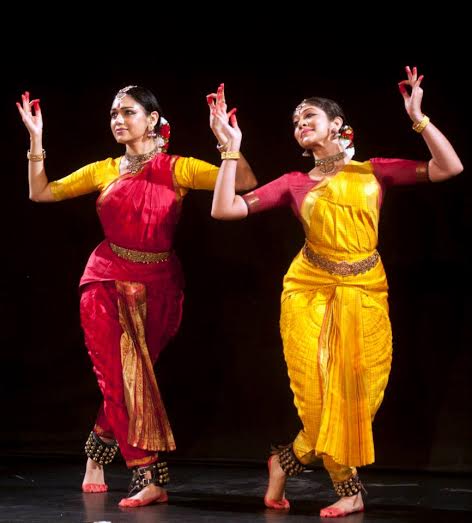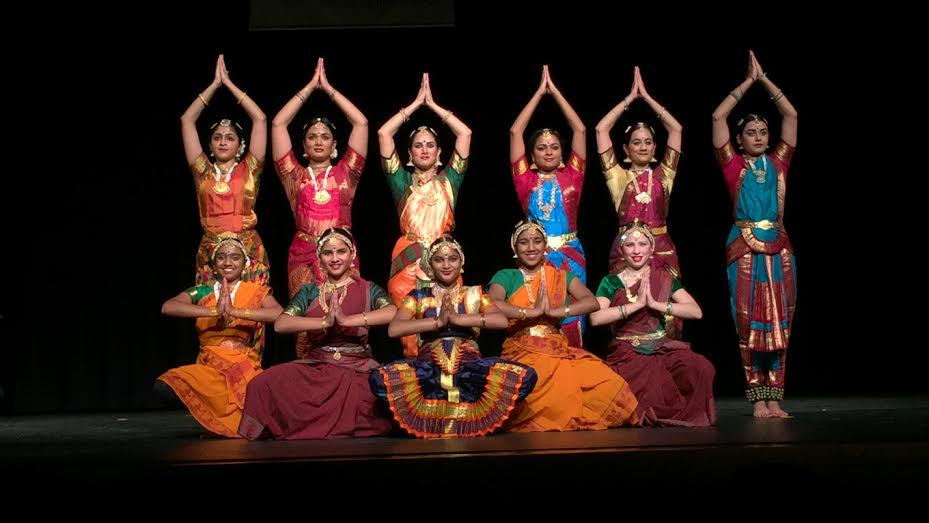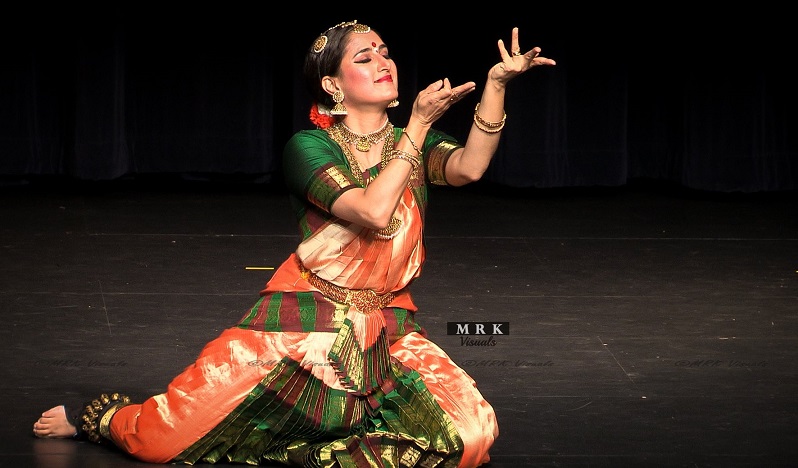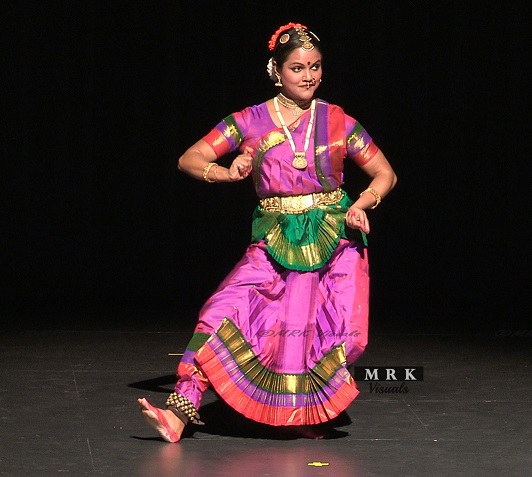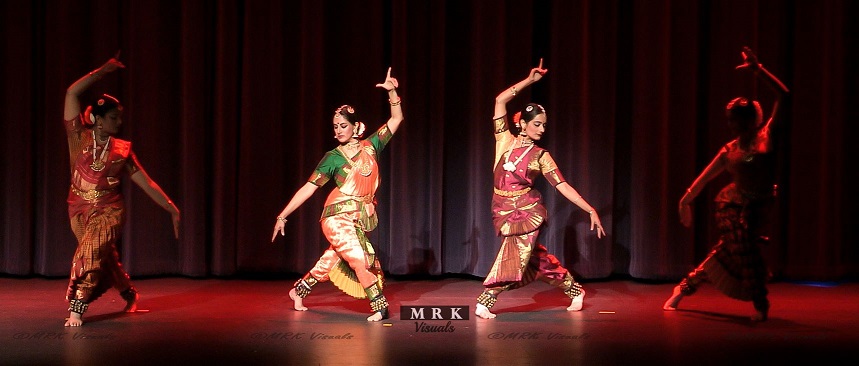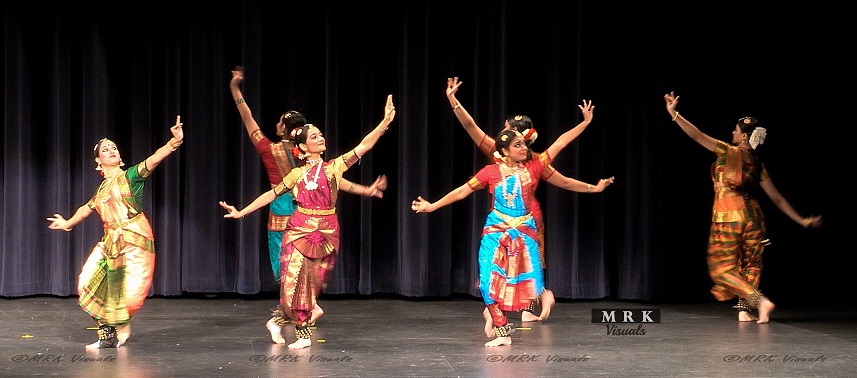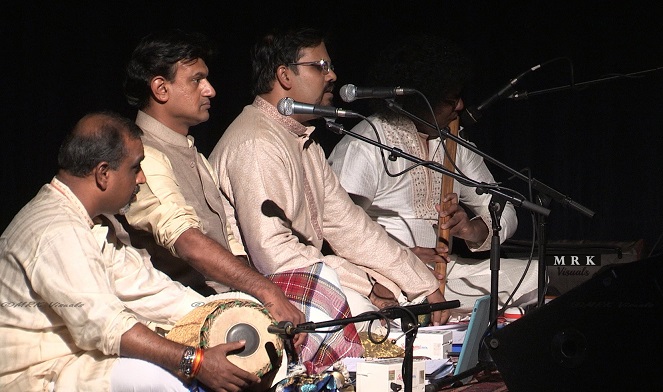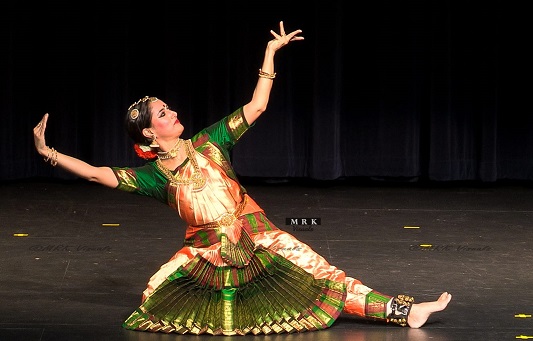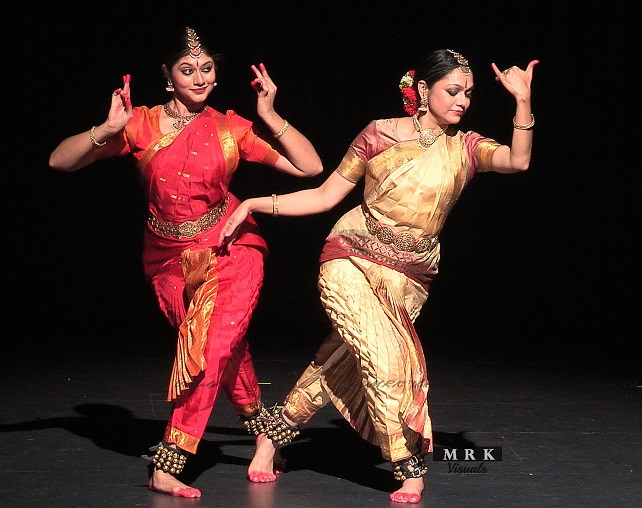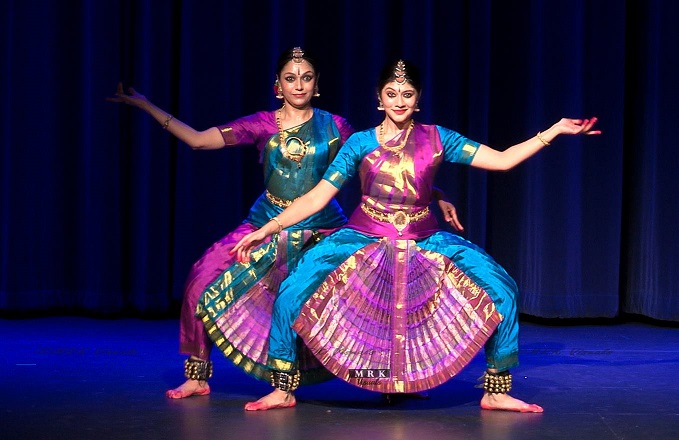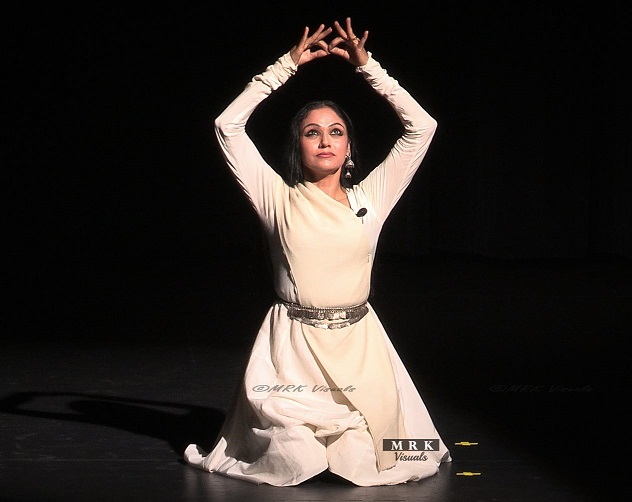Contribute
| TriNethra Festival Dazzles |
Suman Adisesh
11/18/2015
TriNethra, the third eye festival of dance, was inaugurated on 13November at the Scottish Rites Masonic Museum in Lexington, MA. This festival was conceived and brought to fruition by accomplished Lexington based Bharathanatyam artiste Jayshree Bala Rajamani, director of the Bharathakalai School of Dance. In its inaugural year, the festival featured Jayshree and the dancers of Bharathakalai, local dancer Janani Swamy and one of the leading dancers of our times, Kalaimamani Rama Vaidyanathan and her daughter, Dakshina Vaidhyanathan.
Jayshree’s introductory words, “I am a dancer and I love to dance†perfectly capture the TriNethra experience. As Jayshree described, we dancers most often perform in support of community, fundraising and social causes but rarely have a forum to celebrate dance and dancers and to dance for the love of it.
The first day’s performance opened with Jayshree and dancers from Bharathakalai presenting the choreography of Rama Vaidyanathan. The young dancers of Bharathakalai accompanied their Guru with poise, their effort and dedication – and that of their Guru- evident in their presentation. The pieces had all the hallmarks of Rama Vaidyanathan- lyrics from a vast array of ancient and modern poets and composers, beautifully set to musical composition and perfectly conceived through the choreography. The first piece was “Mahishasuramardini Salaam Daru†composed by Maratha Ruler Serfoji Maharaja with myriad depictions of the Goddess and varied patterns of nritta and the unique salutation of the Goddess with “Salaamâ€. This was followed by “Shambho Natanam†set to the lyrics of Pathanjali Muni, in which Jayshree and her students depicted Lord Nataraja in His vibrant cosmic dance. This was followed Jayshree’s delightful depiction of a Kanditha Nayika in Maharaja Swathi Thirunal’s Padam “Aye Giridhar Dwareâ€. Jayshree’s skill and artistry shone through as she conveyed dismay, anger and sarcasm in her portrayal of a heroine who loves Krishna but not at the expense of her self- esteem (aptly termed “Sassy Gopi†by one of Jayshree’s students!). The dancers of Bharathakalai concluded their performance with a vibrant thillana in the Ragam Varamu and a Slokam praying for Peace and Happiness for the entire universe. Throughout the presentation, these young dancers conveyed joy and a love for dance.
Accompanying dancers were: Ambika Jayakumar, Anika Tara Ruberti, Devi Patel, Manaswini Garimella, Mayari Bala Rajamani, Mayuri Venkatesh, Nethra Vasudevan, Nithyani Anandakugan, Sravani Kumar & Vennela Mannava.
Accompanying Musicians: Dr. S. Vasudevan (Nattuvangam/Vocal), K. Venkateswaran (Vocal), Ramamoorthy Sriganesh (Mridangam) and Rajat Prassana (Flute). These were Rama’s troupe.
The second half of the evening’s presentation featured Mad and Divine by the iconic Rama Vaidyanathan. In this work, Rama brought to life two female mystical poets- the 13th Century saint Janabai and the 14th century saint Lalleswari- who suffered hardship and ridicule before attaining status as awakened beings of faith. The presentation was a testament to Rama’s creative vision and consummate artistry. Rama lovingly brought these women to life using music, movement, speech and costume to create a whole artistic experience. The presentation also revealed the power of dance to tell stories and create experiences beyond the conventional.
Act I on the second day of TriNethra was a performance by local dancer, Janani Swamy. It was indeed a pleasure to watch Janani Swamy perform on the second day of the Trinetra festival. Janani is a Chemical Engineer by profession and a very talented musician and dancer by passion.
Janani stuck to the traditional style of Bharathanatyam which was so well nurtured by her esteemed Guru Smt Rajee Narayanan. She was very well supported by talented local artists Jayshree Rajamani on the Nattuvangam, Gaurishankar Chandrashekar on Mridangam, Srivatsan Raghavan and Adith Vijay who are students of Guru Tara Anand on Vocal and Violin respectively.
She began her recital with an invocatory piece in Ragam Saurashtram “Shri Ganapathini †composed by Saint Thyagaraja. This item was marked by neat foot work and very innovative movements representing Lord Ganesha, brought out the immense devotion of the poet/artist towards the Lord who is the destructor of bad omen.
This was followed by a rare Varnam in Ragam Shanmukhapriya “Anname Nee Dayavaiâ€set to Adi Talam and a composition of Guru Rajee Narayan. This was the pivotal piece in Janani’s recital. Janani skillfully portrayed the heroine’s intense love and her immense yearning for her Lord Krishna. Climax of this piece was the sanchari depicting Rukmini eloping with Lord Krishna who saves her from the evil Shishupala. The Varnam composed of very intricate sollukattus, rendered very professionally by Jayshree Rajamani on the Nattuvagam which was in sync with Janani’s neat and rhythmic movements. Janani justified the essence of complete surrender to the God in this varnam.
Janani’s passion for dance was completely visible in this recital and could be felt by the audience, which is the mark of a true artist. Kudos to Jayshree for presenting us our own Boston performers who are so talented and passionate about art. With other commitments these artists put in hours of practice and put together a complete ensemble of local musicians, which is truly commendable. We should encourage more such endeavors.
Act II for the evening was “Dwitha†a performance by Rama Vaidyanathan and daughter, Dakshina Vaidyanathan, who has inherited dance from her illustrious mother but has very much made it her own in her rise as one of India’s leading young dancers. The presentation brilliantly explored the concept of duality in each piece. The opening Pushpanjali invoked Saraswathi, Goddess of knowledge and Lakshmi, Goddess of wealth. This was followed by a brilliant (this is no superlative) and most touching presentation of the classic varnam “Mohamane†by Rama. In this piece, Rama conveyed passion and devotion for Lord Siva- as dual but yet one yearning of the soul for the divine. Rather than the typical literal interpretation, Rama created a broader emotional experience by interpreting the intent and subtexts of the piece. Particularly evocative was Rama’s depiction of the swaying of her heart in response to the swaying dance of the Lord and the depiction of Kama Deva in the charanam. This was followed by Dakshina’s presentation of Sankara’s Ardhanareeshwara Ashtakam- “Creation and Dissolution†in which she beautifully depicted the duality of the male and female principles. Rama and Dakshina then presented “Protect and Set Free†based on an ancient Tamil poem from the Sangam era. In this piece, Rama depicted the conflicting emotions of a mother upon seeing her little girl take the hand of a young man. The performance concluded with “Finite and Infiniteâ€- based on lyrics from the Skanda Purana- which depicts man as mortal yet eternal.
The entire presentation was Bharathanatyam in all its apsects of the highest caliber- dazzling nritta, beautiful form and movement and lyrical storytelling- embodying the spirit of TriNethra. The musicians- Dr. S Vasudevan and Sri K. Venkateshwaran on Nattuvangam and Vocal, Sri Ramamoorthy Ganesh on mridangam and Sri Rajat Prasanna on flute were of the highest order and composed a good part of the evening’s music.
Indeed, TriNethra achieved Jayshree’s vision of dance for the love of dance, bringing together in celebration rasikas, practitioners and students of dance.
You may also access this article through our web-site http://www.lokvani.com/
